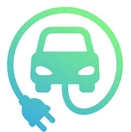Sorry if this is a dumb question. I currently drive a hybrid and am looking to upgrade in the next 1- 2 years to either PHEV or full EV. In either scenario, I envision most of my charging will be done at home. However, if I go full EV, I will eventually need to charge in public.
I’ve read it varies from charging network to charging network, so I figure I’d ask EV owners what their experiences are like. I really don’t like the idea of relying on an app or monthly subscription or anything like that.
So, is a debit card more or less guaranteed to be accepted, and if so, are the rates significantly higher than some kind of membership option?
Edit: In the US if it matters.


I’ve only ever used Superchargers (I have a PHEV, but there’s no need to charge that away from home). The Supercharger just talks directly to the car and handles it through your Tesla account/app. Once most cars are using the NACS connector in a year or two, I assume this will be how it works for them too.
App-based billing? No thanks. lol
deleted by creator
I can grudgingly understand Tesla’s network may be app based and tied to their infrastructure, but that doesn’t mean I’m happy about it. I’m leaning toward going PHEV in hopes that the EA and more “generic” charging stations get built out in the mean time and that they support more traditional payments (at least I’m not insisting on writing a check lol). At least once my EV range is exhausted, I can just use the ICE until I can charge up at home.
Plus, I live in a yeehaw state that has hefty hybrid and EV “taxes” added to the yearly registration fees. I currently drive a hybrid, and the extra fees I pay are the same whether it’s a PHEV or traditional hybrid. A PHEV would definitely give me more bang for my buck; a full EV would cost even more in fees.
deleted by creator
Good to know. The more I research BEVs, the more I realize how much I don’t know. lol
Most of the PHEVs I’ve looked at top out around 50 or so miles of EV range, and that pretty much covers all of my day to day driving with some to spare. For extended trips, I don’t see myself topping off the HV battery unless I’m lodging overnight or something.
Does that mean they can’t charge at all from those, or they just charge slower? Thinking of like if a hotel had a charging station, for example.
Glad I posted this because I was just assuming the charge stations worked like gas pumps and I’d just swipe, wait a bit, and go. Apparently not lol.
This is going to be a bit long. If you want a better explanation, here is an excellent (albeit a little outdated) video on the subject: https://youtu.be/Iyp_X3mwE1w
BEVs are a little more complicated, but not that much. There’s 3 main levels of charging to be aware of.
Level 1- 120v AC charging. Connect to a standard (and hopefully isolated) wall outlet. Your charging cable delivers this straight to your car, which then converts it to DC to charge the battery. Also known as trickle charging, it adds about 3 miles of range for every hour spent charging. It is almost never seen outside of home charging.
Level 2- 208/240v AC charging. Similar to the above, except you either have a 240v outlet or the charging cable) station is hardwired directly. Specs vary, but common configs are 5-10 times (7-12 kW) as fast as level 1. Still delivers AC directly to your car. This is also what you see at hotels, parking garages, etc where you are not going to be sitting there waiting on it. The required infrastructure is only some heavy-duty AC electrical cables and a way to bill you. Levels 1 and 2 use the J-1772 connector. Tesla calls theirs Destination Chargers.
Level 3- DC Fast Charging. This is an interesting idea- why limit yourself to the (relatively) puny charger you have onboard the vehicle? Or bypassing the normal limits of how thick a cable must be? These chargers, using the Combined Charging System (CCS) standard have an extra set of very thick pins that connect directly to the battery system. They deliver as much as 350 kW (depending on car model/capabilities) of DC power, straight into the battery system. They also have water-cooled cables to deliver that much power without an unwieldy cable. These are what you see at truck stops and places where people are going to be waiting for the charge to complete. Tesla calls theirs Superchargers.
The Tesla connector was recently opened up to the world as the North American Charging Standard, or NACS. Many other manufacturers have already announced a switch to this. For the J-1772 connector (levels 1 and 2), this is basically the same thing in a different shape. It’s even electrically compatible, so a dumb adapter will work. But what’s different is that the charging pins are much, much bigger. It can handle a level 3 DCFC on the same pins, albeit with some additional circuitry to handle these different modes.
Here is an alternative Piped link(s):
https://piped.video/Iyp_X3mwE1w
Piped is a privacy-respecting open-source alternative frontend to YouTube.
I’m open-source; check me out at GitHub.
Can’t charge at all. PHEVs don’t really need fast charging anyway.
deleted by creator
My current hybrid is in great shape, so no rush other than wanting more EV range and to get less screwed on the backwards fees I have to pay (hybrid and PHEV are same fee bracket). I’ve got a Ford Fusion Hybrid and was looking at simply upgrading to the Energi which is the PHEV version of it. (I absolutely regret not getting that model when I bought this one, but at the time, I didn’t have anywhere to charge it).
Barring something unexpected or catastrophic happening, I can definitely wait a few years and reassess. The ultimate goal is still a BEV, but I may need to wait a bit for things to standardize across the board (we’re getting there, though!).
I’m sure you’ve seen the figures that the average American drives ~40 miles a day. That’s where the ~50 mile range PHEV battery comes from.
The question is what happens when you need to go further than that. On early EVs (like the GM EV-1), the answer was honestly to just find another car. That limited its appeal to just being a commuter/second car.
PHEVs answered that by including a gas drivetrain, although some now are just a gas generator. BEVs answered that by including a giant battery and enabling fast charging (as a concept, not necessarily as a product)
Yeah, the 40-50 mile/day range is my current situation which is why I’m considering a PHEV. Wasn’t always the case, but still, 40-50 miles of EV range will certainly add up over time.
When I got this car, I was first looking for a
BoltVolt but no dealerships around here carried them. Not long after, GM discontinued it. Luckily, I think I read the other day they’re bringing it back, so that may be an option soon.Yeah between that and the removal of the inspection (but keeping the fee) I’m just like “fuck you” and not registering my car anymore.
I guess my point is that you don’t really DO anything. You don’t have to fire up an app and log in and shit. The charger talks to the car when you plug it in and it just goes. Not sure what your hang-up is with apps (no judgement here, but clearly there is one) but in this case it’s pretty seamless and a lot more convenient than some other custom payment apps.
Oh, yeah, I got that. But I’d read (either a long time ago or incorrectly) that it needed to be actively connected to the internet to authorize the payment (e.g. Google Wallet, etc).
Lol. I’ve been a tech enthusiast all my life, but years ago I had my “turn it around, we’ve gone too far” moment with regard to apps. 99% of them could and should be websites and ask for every permission under the sun. Nah, just let me swipe my card and enter my PIN. Takes like 5 seconds.
NACS is just a connector. Don’t expect anything else to change just because they swapped a connector.
Pretty sure they said they will have access to the Supercharger network. I don’t see Tesla adding card readers to every supercharger. I think it’s far more likely that the cars will talk to the superchargers just like Teslas do.
Who?
They aren’t.
“More likely” than what? Tesla doesn’t need to add payment terminals in order for other companies to do it. The payment system is not determined by the connector. It’s literally just an interface to connect wires.